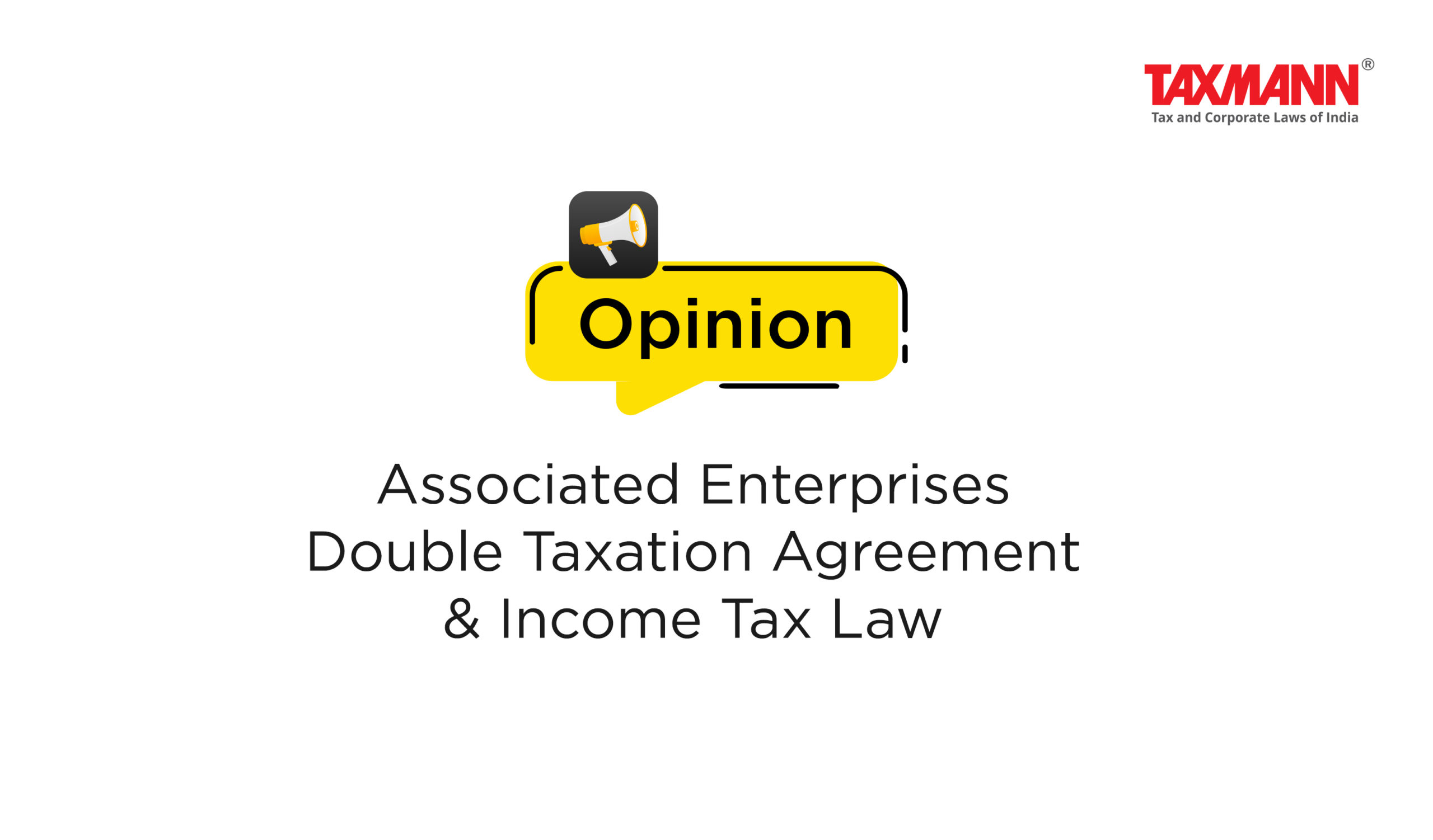[Opinion] Associated Enterprises Double Taxation Agreement & Income Tax Law
- Blog|News|International Tax|
- 3 Min Read
- By Taxmann
- |
- Last Updated on 19 June, 2023

CA Sombir Singh – [2023] 151 taxmann.com 222 (Article)
1. Introduction
Since the introduction of transfer pricing, the issue of transfer pricing has been highly litigious in terms of establishing associated enterprises and subsequent adjustment. The provision of transfer pricing ensures that the transaction between related parties is at a price that would be comparable if the transaction was occurring between unrelated parties or in other words at Arm’s Length Basis. The provisions of transfer pricing are only applicable if two conditions are met. Prime condition is that there be two or more Associate Enterprises (hereinafter, “AE”), and the secondary is that these AEs engage in international transactions. Hence, the concept of transfer pricing is premised on the fundamental principle of “associated enterprises” or the existence of an AE must be established before any transfer pricing regulations can be applied to a particular case. Since the last two decades, there has been a tug of war between taxpayer and revenue because taxpayer claims there is no AE and thus no Transfer Pricing reporting and compliance is not required, whereas Revenue considers those enterprises to be AEs and invokes TP Regulations and make adjustment. Therefore, the purpose of this article is to address the controversies surrounding the definition of AE in the Income Tax Act of 1961 and Article 9(1) of the OECD Model Tax Convention, as well as certain adjustments made under domestic law and Article 9 of the OECD Model Tax Convention when the entities established as associated enterprises.
2. Associated Enterprises
The scope and meaning of term associated enterprises defined in section 92A of the Act, the section 92A of the Act has two part which is 92A(1) and 92A(2). Section 92A(1) of the Act is based on the Article 9(1) of OECD Model Tax Convention (Identical to UN Model) and section 92A(2) provide rule based 13 criteria such as holding of capital, advance of loan, appointment of directors, controlled by an individual or his relative etc. during which associated enterprises relationship is deemed to be established.
Analysis of section 92A of the Act:
The section 92A of the Act is reproduce hereunder:
“(1) For the purposes of this section and sections 92, 92B, 92C, 92D, 92E and 92F, ‘associated enterprises’, in relation to another enterprise, means an enterprise –
(a) which participates, directly or indirectly, or through one or more intermediaries, in the management or control or capital of the other enterprise; or
(b) in respect of which one or more persons who participate, directly or indirectly, or through one or more intermediaries, in its management or control or capital, are the same persons who participate, directly or indirectly, or through one or more intermediaries, in the management or control or capital of the other enterprise.
(2) For the purposes of sub-section (1), two enterprise shall be deemed to be associated enterprise if, at any time during the previous year,-
(a) one enterprise holds, directly or indirectly, shares carrying not less than twenty-six per cent of the voting power in each of such enterprise; or
(b) to (m)—————————–“
There are in all thirteen situations enumerated in sub-section 2.
At the time of interpreting the concept of AEs, the following contemporary issues are arising:
1. whether enterprises would be considered as associated if clause (2) of Section 92A is satisfied but clause (1) is not. The assessees may fall under the illustrations since the commercial transaction being subject to transfer pricing adjustments is of that nature; however, there may be no direct or indirect participation in the management or control or capital of one of the enterprises in the other. For example, a bank has given loan to a company which constitutes more than 51% of the book value of the total assets of such company but no direct or indirect participation in the management or control or capital of such company.
2. whether an enterprises participation in the management or control or capital of the other enterprise shall make them associated enterprises, when the criteria specified in sub-section (2) are not fulfilled.
Click Here To Read The Full Article
Disclaimer: The content/information published on the website is only for general information of the user and shall not be construed as legal advice. While the Taxmann has exercised reasonable efforts to ensure the veracity of information/content published, Taxmann shall be under no liability in any manner whatsoever for incorrect information, if any.

Taxmann Publications has a dedicated in-house Research & Editorial Team. This team consists of a team of Chartered Accountants, Company Secretaries, and Lawyers. This team works under the guidance and supervision of editor-in-chief Mr Rakesh Bhargava.
The Research and Editorial Team is responsible for developing reliable and accurate content for the readers. The team follows the six-sigma approach to achieve the benchmark of zero error in its publications and research platforms. The team ensures that the following publication guidelines are thoroughly followed while developing the content:
- The statutory material is obtained only from the authorized and reliable sources
- All the latest developments in the judicial and legislative fields are covered
- Prepare the analytical write-ups on current, controversial, and important issues to help the readers to understand the concept and its implications
- Every content published by Taxmann is complete, accurate and lucid
- All evidence-based statements are supported with proper reference to Section, Circular No., Notification No. or citations
- The golden rules of grammar, style and consistency are thoroughly followed
- Font and size that’s easy to read and remain consistent across all imprint and digital publications are applied





